Culture of Aruba
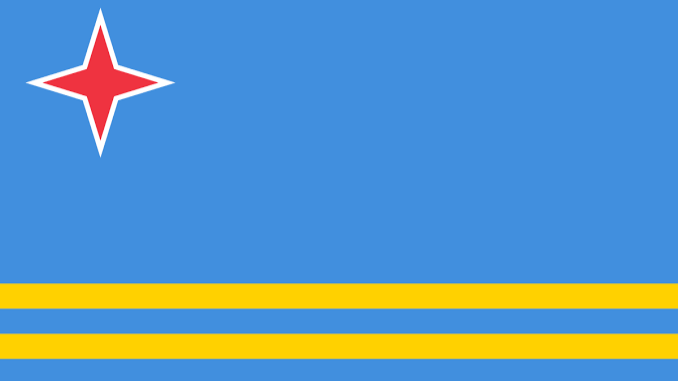
Culture Name
Aruban
Orientation
Identification. Aruba is a multicultural island society, with Caribbean and Latin American features.
Location and Geography. Aruba is the most southwestern island of the Caribbean archipelago, located 20 miles (32 kilometers) off the Venezuelan coast. With Curaçao and Bonaire, it forms the Dutch Leeward Islands. Aruba's area is 70 square miles (180 square kilometers). The climate is tropical, with an average temperature of 82 degrees Fahrenheit (28 degrees Celsius). Yearly rainfall usually does not exceed 20 inches (500 mm). Aruba lays outside the Caribbean hurricane belt.
Demography. Aruba's population was 93,424 in 1998, as compared to 59,995 in 1987. That growth is attributed mostly to immigration. Not included are an estimated 5,000 illegal aliens. The proportion of foreign-born inhabitants has risen from 18.5 percent in 1981 to 28 percent in 1994. Life expectancy is 71.1 years for men and 77.1 years for women. The population density is 200 legal inhabitants per square mile.
Linguistic Affiliation. The traditional language is Papiamento (Talk), a Creole language that is also spoken on Curaçao and Bonaire. The origins of Papiamento are much debated. According to the more popular monogenistic theory Papiamento, like other Creole languages from the Caribbean, originates from one single Afro-Portuguese proto-Creole, which developed as a lingua franca in Western Africa in the days of the slave trade. The polygenetic theory maintains that Papiamento developed on Curaçao with a Spanish base. Aruban Papiamento has a stronger Spanish influence compared to that spoken on Curaçao and Bonaire.
Owing to 360 years of colonial domination, Dutch is the official language in education and public affairs. The oil industry, tourism, and subsequent migration brought English and Spanish to the island and those are the second and third most spoken languages. Most residents are multilingual.
Symbolism. Papiamento and the national flag, anthem, and coat of arms are the most important national symbols. They stress the inhabitants love for the island, the close connection to the Caribbean Sea, and the multi-cultural composition of the population. The national anthem is played and sung on many occasions. The Dutch flag functions as a symbol of the unity of Aruba, the Netherlands, and the Netherlands Antilles.
History and Ethnic Relations
Emergence of the Nation. Indian populations inhabited Aruba prior to the European discovery. Between 2000 B.C.E. and approximately 850 B.C.E. , the island was populated by preceramic Indians. Around 850 B.C.E. , Caquetio Arowaks from western Venezuela migrated to Aruba, introducing pottery and agriculture.
The Spanish discovered Aruba in or around 1499. Because of the absence of precious metals Aruba, Bonaire, and Curaçao were declared Islas Inutiles (Useless Islands). In 1515 their inhabitants were deported to Hispaniola to work in the mines. After an unsuccessful colonization effort by Juan de Ampíes (1526–c. 1533), the island was used for cattle breeding and wood cutting. Small numbers of Indians from the mainland migrated to Aruba. Spanish priests from Venezuela attempted to Christianize them.
The Dutch West India Company (WIC) took possession of Aruba in 1636, two years after the Dutch conquest of Curaçao. Indians from the mainland continued to migrate. Colonization of the island was forbidden until 1754. In 1767, the colony
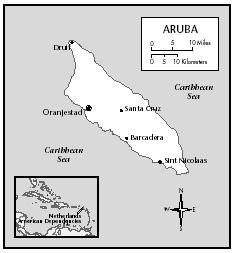
Aruba
consisted of one hundred twenty households, twelve of which were in the employ of the WIC. Another one hundred were Indian households. After the dissolution of the WIC (1792) and two English interregnums (1801–1803 and 1806–1816), serious colonization started. The elite was mainly active in commercial agriculture and illegal trade with South America. Peasants remained dependant on small scale agriculture, fishing, and labor migration within the region. Slaves never exceeded 21 percent of the population (1849). Slavery was abolished in 1863, when 496 slaves obtained freedom. In the absence of a plantation economy a peasant culture emerged. Colonists, Indians, and blacks intermixed forming the traditional Mestizo-Creole population.
The oil industry arrived in the 1920s and brought rapid modernization and immigration of industrial laborers, merchants, and civil servants from the Caribbean, Europe, the Americas, and China. Aruba became a pluralistic society of over forty nationalities. Afro-Caribbean migrants surpassed the traditional population in economic position and cultural esteem. The position of the traditional elite as commercial entrepreneurs was taken over by Lebanese, Jewish, and Chinese migrants and foreign trade companies.
The Eagle Oil Refining Company (a Royal Dutch/Shell affiliate) ceased its activities in 1953. A major economic setback occurred when the last major international oil company, Lago (owned by EXXON), went out of business in 1985. Tourism, which was first initiated in the 1950s, strongly expanded and became the main economic pillar. The need for labor resulted in a new wave of immigration from the Americas, the Caribbean, the Philippines, and the Netherlands.
Aruba has been part of the Dutch Empire since 1636. Between 1845 and 1954 Aruba, Curaçao, Bonaire, and the windward islands of Saba, Sint Eustatius, and the Dutch part of Sint Maarten formed the colony of Curaçao and dependencies. As a relatively wealthy island, Aruba worked to separate itself from the colony since 1933. Insular nationalism was strengthened by cultural and racial differences with Curaçao. In 1954, the Netherlands Antilles were granted autonomy within the Dutch kingdom. After a rebellion on Curaçao in 1969, the Netherlands pressed for formal independence of the six Antillean Islands. Out of fear of becoming decolonized as a part of the Netherlands Antilles, Aruba opted for separate status. Despite unwillingness on the part of Curaçao and the Netherlands, Aruba became an autonomous part of the Dutch kingdom in 1986. The decision that Aruba would become fully independent in 1996 was revoked; Aruba remains autonomous within the Dutch kingdom.
National Identity. Papiamento is the most important marker of Aruban identity. Cultural and historical differences with Curaçao are stressed in the island's national identity. Identification with Dutch culture is weak, while Aruba's unique Indian history and cultural heritage are accentuated. The rural life of the mestizo population during the nineteenth century is an additional source of identity. Mass media, tourism, and massive immigration are agents of rapid change in cultural reality. Some citizens are cultural conservatives because of growing concern about this rapid change.
Ethnic Relations. Ethnic tensions focus around the immigrants who came to Aruba since 1988. A division exists between the immigrants from the Netherlands, the United States, and India and the unskilled or semi-skilled laborers from South America, the Caribbean, and the Philippines. The former hold better positions in tourism, trade, and banking, and also work in the government or the educational system. Some eight thousand South American, Caribbean, and Filipino immigrants are employed in lower-level positions in tourism, trade, and the construction sector. Women from Santo Domingo, Colombia, Haiti, and Jamaica work as live-in domestics for upper- and middle class families.
Political participation of non-Dutch immigrants is absent. Participation in trade unions is limited. Ethnic pressure groups do not exist, although internal informal ties are strong. Participation of immigrants in social, cultural, and political life is stagnating. In local newspapers and on radio stations the tensions between lower class Arubians and Latin American migrants are often expressed. The rise in crime is often unjustifiably ascribed to immigrants. The tourism sector and the educational system are the most important areas of social interaction and integration.
Urbanism, Architecture, and the Use of Space
Aruba's capital, Oranjestad, is on the southwestern coast. It is the seat of the government and has a growing number of hotels. Cruise ships, shopping malls, and tourists dominate the street scene. A small fort called Fort Zoutman (1798) is Aruba's oldest building and is situated near the harbor of Oranjestad. Interesting monuments in Oranjestad are private homes from the 1920s and 1930s. The National Monument Office promotes the preservation of the 300 registered monuments. Thanks to public and private initiatives, several of these have been restored and relocated. San Nicolas, on the east side of the island, is the second largest town and the industrial center. Its industrial and private buildings date from the 1940s and 1950s. Plans for preservation and restoration are hampered by a lack of funds and political priority. The west and southwest shore form the tourism area. Luxurious hotels are built along the white beaches. Townships are spread over the island. Most important are Noord, Santa Cruz, and Savaneta. In Oranjestad and the townships many unique small colonial peasant houses—socalled "cunucu-houses"—were restored and modernized by their owners. Traditional elements, such as the saddle roof, are frequently incorporated in modern architecture.
Population growth has led to the building of many new residential areas. The lack of town and country planning threatens the balance between urbanization and the preservation of rural and natural landscapes. The hilly northeastern part of the island is the National Park, Ari Kok , which is allocated for preservation and eco-tourism.
Food and Economy
Food in Daily Life. In the traditional menu maize dishes ( funchi , pan bati ), goat meat, fish, and stoba —stewpots of local vegetables (peas, beans) dominate. Nowadays, rice, chicken, beef, and fish are eaten most. The number one snack is the pastechi , a small pie filled with cheese or beef. International food chains and Chinese, Italian, and other ethnic restaurants have gained popularity. Most food products are imported.
Food Customs at Ceremonial Occasions. Food is an important ingredient at most secular celebrations. At children's parties a piñata filled with sweets hangs on the ceiling. Blindfolded, the children try to hit the piñata with a stick. Bolo pretu (black cake) is offered at special occasions.
Basic Economy. Having scant natural resources of its own, Aruba has relied on oil refining and tourism as its main sources of income throughout the twentieth century. After the last major refinery close in 1985, government revenues and the standard of living declined 30 percent. Reconstruction of public finances and the expansion of the tourism sector resulted in economic recovery. The number of hotel rooms and time-shares tripled between 1986 and 1999.
Other sectors of the economy boomed after 1988, when unemployment disappeared. The gross domestic product (GDP) doubled between 1987 and 1992. Despite the economic recovery, serious concerns arose because of inflation and strains on the labor market, infrastructure, and the environment. Since about 1995 economic growth has stabilized. The establishment of Coastal Oil in 1988 and the expansion of free zone activities serve to diversify the vulnerable tourist-based economy. Government, hotels and restaurants, construction, transportation, real estate, and business are the nation's major employers.
Land Tenure and Property. The government owns approximately two-thirds of the island. Since the decline of agriculture after the arrival of the oil industry, land tenure has been important mostly for the construction of houses. Three types of land tenure occur: regular landed property; hereditary tenure or long lease; and the renting of government grounds. For economic purposes, especially in the oil industry and tourism, government grounds are rented in renewable leases of sixty years.
Commercial Activities. Commercial activities are concentrated in tourism and the oil industry. A
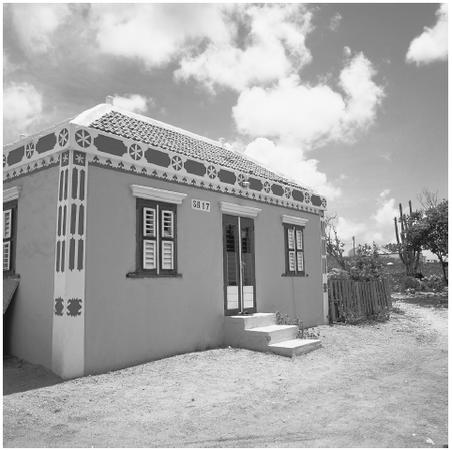
In many townships, small colonial peasant houses have been restored and modernized.
small number of offshore companies specializing in banking, insurance, and investment are established on the island.
Major Industries. Coastal Oil Corporate renovated the remains of the old Lago refinery and started operations in 1988. Wickland Oil Company handles oil transshipment. Small industries, such as breweries and bottling companies, are established in Oranjestad and near the Barcadera free zone area. Production is for local consumption and export.
Trade. Like commerce, trade is mainly directed towards tourism and local consumption. The United States is Aruba's largest trade partner. The free zone is becoming increasingly important because of revenues related to port charges and services.
Division of Labor. An important division of labor is based on ethnicity. Civil servants are drawn mostly from traditional Arubians and immigrants who arrived between 1924 and 1948, during the oil-boom years. In tourism these groups hold middle- and upper-management positions. Naturalized citizens and permanent residents of Lebanese, Madeirean, Chinese, and Jewish descent focus mainly on trade. Newly arrived Chinese immigrants have opened restaurants and supermarkets all over the island. Recent immigration includes Filipinos, Colombians, and Venezuelans, who hold lower-level positions in tourism and house keeping.
Social Stratification
Classes and Castes. Aruba is divided along class, ethnic, and geographical lines, which to a large degree overlap. Although socio-economic inequality is significant, class lines are loosely defined. The upper class consists of traditional elite and Lebanese, Chinese, and Jewish minorities. Economic recovery after 1988 increased upward economic mobility for the middle class, whose spending has increased. Lower class Arubians and recent immigrants from South America and the Philippines form the lower social classes.
Symbols of Social Stratification. Social stratification is evident in consumption patterns. Conspicuous consumption is obvious for the upper class. Aruba's middle class has upper class consumptive aspirations. Arubians consider private ownership of houses extremely important. Residential patterns also reveal aspects of social stratification. Oranjestad west and Malmok are the residential areas of the upper class. Oranjestad east and San Nicolas are the poorest districts.
Political Life
Government. Aruba has been an autonomous part of the Dutch kingdom since 1986. The governor of Aruba is the head of the Aruban government and the local representative of the Dutch monarch. The Netherlands' Council of Ministers consists of the Dutch cabinet and two ministers plenipotentiary, one representing Aruba and the other the Netherlands Antilles. The council is in charge of joint foreign policy, defense and justice, and the safeguarding of fundamental rights and freedom.
Leadership and Political Officials. Aruba is a parliamentary democracy with a multiparty system. Elections are held every four years. Since achieving the Status Aparte, the government has been dependent on coalitions between one of the two bigger parties and the smaller parties. The biggest parties are the Christian-democratic Arubaanse Volkspartij (Peoples Party of Aruba) and the social-democratic Movimiento Electoral di Pueblo (Peoples Electoral Movement). Democracy functions with a certain degree of patronage and nationalistic rhetoric. Political parties usually have one powerful leader who carefully selects candidates from different socio-economic, regional, and ethnic backgrounds.
Social Problems and Control. Some labor conflicts occur, but these have never led to serious threats to peace in the work place or to economic instability. An increase in petty crime is a concern to many citizens. Serious crimes are rare although armed robbery has increased during the last five years. Alcohol and drug abuse are serious concerns. Drug addicts, chollers, are resented. Local social control is provided by the juridical system. Aruba has its own legal powers but shares a Common Court of Justice with the Netherlands Antilles. The Supreme Court is situated in the Netherlands.
Military Activity. There has been no military activity on or near the island since 1942, when a German submarine attacked the Lago and Eagle oil refineries. Part of the Dutch Forces Caribbean is in Savaneta where approximately 270 Dutch and Aruban marines are stationed. Their primary task is to protect the island and its territorial waters. The Coast Guard of the Netherlands Antilles and Aruba started operations in 1995 to protect the islands and territorial waters from drug trafficking. In 1999 a division of the Maritime Interdiction Division of the United States Customs Service started surveying international waters for drug trafficking.
Social Welfare and Change Programs
Unemployment compensation is available for all persons born in Aruba. Free legal assistance is provided to those who are insolvent and registered. There is an increase in programs concerning child abuse, teenage pregnancy, school drop outs, marital violence, and drug abuse.
Nongovernmental Organizations and Other Associations
UNOCA (Union di Organisacionnan Arubano— Union of Aruban Cultural Organizations) is a nongovernmental board, which advises the minister of culture on the allocation of subsidies for cultural and scientific projects. CEDE-Aruba (Centro pa Desaroyo Social di Aruba—Center for Social Development of Aruba) is a more autonomous NGO that allocates funds to social and educational projects.
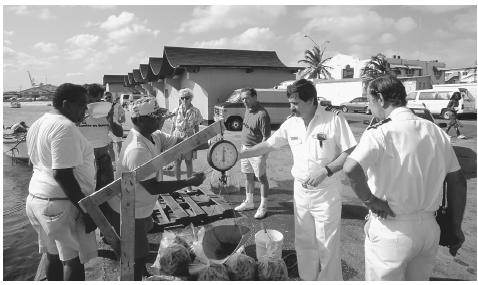
Men buying shrimp from local vendors at Oranjestad Harbor.
UNOCA and CEDE-Aruba are funded by the Dutch development aid program. A large number of welfare organizations focus on different topics, varying from the quality of day care centers to the care of the elderly. The government supports many of these with personnel and/or project subsidies.
Service clubs such as Lions, Rotary, and Jaycees have become more influential in recent years. They support welfare institutions with gifts and other forms of aid. Aruba has about ten environmental organizations. Some focus on educational activities, others act as pressure groups.
Gender Roles and Statuses
Division of Labor by Gender. The number of women in the labor market has increased enormously. Participation between 20 and 50 years of age varied between 60.3 and 74.4 percent in 1994, as compared to 31.6 and 59.8 percent in 1981. Unemployment for women is higher than for men. Women tend to leave the labor force at an earlier age than men do. Women outnumber men in service and sales positions. The minimum wage for men and women is the same. Discriminatory rules, which hampered female participation in the civil service, have been removed. Nevertheless, men continue to hold the more important positions.
The Relative Status of Women and Men. Gender-oriented groups work for the re-evaluation of the existing position and role of women within the family and society. A feminist movement, which strives for a fundamental reconstruction of gender categories and roles, does not have a strong voice or a large following.
Marriage, Family, and Kinship
Marriage. Monogamy and legal marriage are the norm, but extramarital and premarital relations are common. Fifty-nine of every one hundred marriages end in divorce. In 1998, 42.2 percent of live births were illegitimate. Intra-ethnic marriages are most common, but far from exclusive. In 1990 and 1991 45.2 percent of Aruban-born men and 24.8 percent of Aruban women married non-Arubians. One cause of this is that by marrying Arubians, foreigners can obtain much-desired Dutch nationality.
Domestic Unit. The conjugal nuclear family is the most common domestic unit, but many other types are also common. The traditional household is matricentric.
Inheritance. Normally all children share in the inheritance.
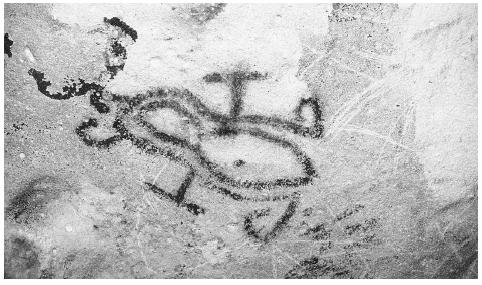
A petroglyph on a cave in the inland desert of Aruba.
Kin Groups. Until the beginning of the twentieth century the extended family and the conjugal nuclear-family household were the centers of kinship organization. As a result of patri- or matrilocal settlement, groups of brothers and/or sisters with their spouses lived near to each other on family grounds. Although a shortage of land and urbanization has caused a decrease of patri-and matrilocal settlement and the weakening of the traditional type of kinship organization, the kin group remains the most important locus of social interaction.
Socialization
Infant Care. Within the nuclear family the mother predominantly takes care of infants.
Child Rearing and Education. Socialization takes place mainly within the family and at school. As a consequence of the growing number of divorces and women's participation in the labor market, the nuclear family is weakening. A growing number of children are attending day care centers before entering the educational system. After-school care is taken up by private enterprise and the government supported project Tra'i Merdia (afternoon). Education is based on the Dutch system. At the age of four children attend kindergarten and after age six they attend primary school. After age twelve they enroll in secondary or vocational schools. After secondary education many students leave for Holland for further studies. In 1988 a large-scale renovation project of the educational system at all levels was initiated and was directed at modernizing and Arubanizing the Dutch oriented system.
Higher Education. The Aruban Teacher Training College provides higher education. The University of Aruba has departments of law and business administration. Adult education is provided by Enseñanza pa Empleo (Education for Employment).
Etiquette
Etiquette, ceremony, and protocol are enjoying growing popularity for many occasions. Aruban etiquette is basically a variation of the classical European formal tradition, with a Latin American couleur locale .
Religion
Religious Beliefs. Eighty-six percent of the population is Roman Catholic but church attendance is much lower. Dutch Reformed-Lutheran Protestantism, the religion of the traditional elite, is embraced by less than 3 percent of the population. Twentieth century migration led to the appearance of smaller groups such as Methodists, Anglicans, Evangelists, Jehovah's Witnesses, Jews, Muslims, and Confucianists. The number of and participation in religious sects and movements are increasing.
Religious Practitioners. Traditional popular assumptions about the supernatural are called brua . Although the term originates from the Spanish word bruja (witch), brua is not equated with witchcraft. It includes magic, fortune telling, healing, and assumptions about both good and evil. Magic is conducted by a hacido di brua (practitioner of brua) and can be applied both beneficently and maliciously. Belief in brua often is not confirmed because of the low social esteem attached to it.
Rituals and Holy Places. Aruba has eight Catholic parishes and churches and a growing number of chapels. The chapel of Alto Vista (founded in 1750) is the most famous. The Dutch Reformed-Lutheran community has three churches; other Protestant denominations also have places of worship. The Jewish community (ashkenazim) has a synagogue in Oranjestad. Catholic, Protestant, and Jewish cemeteries are located in Oranjestad. A small cemetery of the free masonry is located next to these. Public cemeteries are located in San Nicolas and Sabana Basora, in the center of the island.
Death and Afterlife. Opinions on death and the afterlife are in accord with Christian doctrine. The traditional wake, called Ocho Dia (eight days), is the duration of the customary mourning period, in which close kin and friends participate. On the last evening of mourning the altar is taken apart, and chairs are turned upside down. Windows are opened to make sure the spirit of the deceased is able to leave the house. The wake, which has a medieval Spanish origin, is losing popularity.
Medicine and Health Care
The Doctor Horacio Oduber Hospital has 305 beds. San Nicolas has a public medical center. The number of private medical centers is increasing. Aruba has three geriatric homes. The introduction of general health insurance has met with many practical and political difficulties. Traditional healing methods ( remedi di tera ) make use of herbs and amulets, and are practiced by a healer ( curado or curioso ) who sometimes acts also as practitioner of brua. Modern natural healing methods are growing in popularity.
Secular Celebrations
Traditional ceremonies typically have a Catholic origin or orientation. On New Year's Eve, best wishes are delivered at homes by small bands singing a serenade called Dande . Saint John's Day (24 June) is celebrated with traditional bonfires and the ceremony of Dera Gai (the burying of the rooster). Traditionally, a rooster was buried with its head under a calabash above the ground. At present the ceremony is carried out without the rooster. While a small band is playing and singing the traditional song of San Juan, blindfolded dancers from the audience try to hit the calabash with a stick. Of special importance are the celebrations of the 15th, 50th and 75th birthdays. Carnival was introduced on Aruba in the 1930s by Caribbean immigrants, and has become the most popular festival for the entire population.
National festive days are the Day of the National Anthem and the Flag on 18 March and Queen's Day on 30 April. The former stresses Aruba's political autonomy, while the latter celebrates the partnership with the Dutch kingdom. Aruba's former political leader, Francois Gilberto 'Betico' Croes (1938-1986), is commemorated on his birthday, 25 January. Croes is the personification of Aruba's struggle for separation from the Netherlands Antilles. Croes was seriously injured in a car crash a few hours before the proclamation of the Status Aparte on New Year's Eve 1985. He died in November 1986.
International Labor Day is celebrated on 1 May. Many occupational and service organizations groups have their own festive days.
The Arts and Humanities
Support for the Arts. Aruban art life can be divided into two spheres: a commercial one and one directed at tourism and local recreation. Numerous artists are active in both. A lack of funds and clear governmental policy results in a tension between the commercialization of art for the benefit of tourism and the professionalization of local talent for non-commercial purposes. Expositions are mostly held in banks and ateliers. Plans to start a national arts museum are under discussion.
There has been a strong development and a growing popularity of different disciplines and styles since approximately 1986. Aruba's history, tradition, and natural landscape inspire many artists, who interpret in a modern, universal form. In recent years a number of artists have worked from a more individualistic perspective. Training abroad, workshops and interchange with foreign artists residing on Aruba, and participation in expositions abroad keeps the art community from isolation.
Literature. Literature focuses on poetry and youth literature. In the 1980s interesting novels, plays, and poetry by Aruban writers were published by the publishing house Charuba. At present little literary work of quality is being published. Most authors publish their own work. Efforts to revive Charuba have not yet been successful.
Graphic Arts. The Aruban landscape is a source of inspiration to many professional and leisure painters. Portrait painting is not very widespread. The popularity of both traditional sculpture as well as interdisciplinary three-dimensional graphic arts is rising. Following the economic recovery the number of graphic arts studios has increased since 1988. Most studio artists work as commercial designers. As an art form, graphics is still unrecognized.
Performance Arts. Aruba has several theater groups, of which Mascaruba is the oldest and most popular. The Foundation Arte pro Arte (FARPA, Art for the Arts) promotes local cultural and artistic projects, especially theatre. The Aruba Dance Foundation organizes international festivals and workshops. Several dance and/or ballet schools focus on youth. A theater, Cas di Cultura , is situated in Oranjestad. Aruba hosts biannual international dance and theater festivals. Musicians make a living by playing in the tourist sector and for local audiences. A new generation of Aruban musicians combines traditional Aruban and Caribbean musical styles, with modern influences of hip-hop and reggae. The celebration of Carnival is the high point of the year. The Aruban School of Music offers instrumental music courses. A large number of choirs exist on the island.
The State of the Physical and Social Sciences
Archeological research is carried out by the Aruba Archeological Museum under cooperation with the Dutch University of Leiden. The National Historical Archives and the Cultural Institute undertake some historical and cultural research, but scientific research leans heavily on private and foreign initiative. FUNDINI (Fundacion pa Investigacion y Informavcion—Foundation for Information and Investigation) is a foundation for the promotion of social scientific research and information.
Bibliography
Alofs, Luc. Indian Aruba: An Anthropological Perspective , 2001.
—— and Leontine Merkies. Ken ta Arubiano?: Sociale integratie en natievorming op Aruba, 2nd ed., 2001.
DeHaan, T. J. Antilliaanse Instituties: De Economische Ontwikkelingen van de Nederlandse Antillen en Aruba, 1969–1995, 1998.
Green, Vera. Migrants in Aruba 1974.
Hartog, J. Arbua, zoals het was, zoals het werd: van de tijd der indianen tot heden, 1980.
Labor Force Survey 1994 , 1995.
Lampe, A., ed. The Future Status of Aruba and the Netherlands Antilles, 1994.
Oostindie, G. and P. Verton. "ki Sorto di Reino/What Kind of Kingdom? Antillean and Aruban Views and Expectations on the Kingdom of the Netherlands." West Indian Guide 72 (1 and 2): 43–75, 1998.
Versteeg, Aad. H. and Stephen Rostain, eds. The Archaeology of Aruba: The Tanki Flip Site , 1997.
—— and Arminda C. Ruiz. Reconstructing the Brasilwood Island: the archaeology and the landscape of Indian Aruba, 1995.
